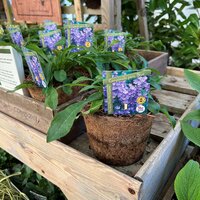What is Soil pH and why does it matter?
In simple terms, soil pH is a measure of the acidity or alkalinity of your garden soil. It matters because certain plants will only thrive in a soil of a particular value.
pH is measured on a scale of 1 -14. 1 is extremely acidic, 7 is neutral and 14 extremely alkaline. Generally, most soils have pH values between 3.5 and 10.0. In higher rainfall areas the natural pH of soils typically ranges from 5 to 7, while in drier areas the range is 6.5 to 9.
pH stands for potential hydrogen and the scale measures the hydrogen Ion concentration. Because hydrogen ion concentration varies over a wide range, a logarithmic scale is used: for a pH decrease of 1 the acidity increases by a factor of 10.
Soils thus can be classified according to their pH value:
6.5 to 7.5 - neutral
over 7.5 - alkaline
less than 6.5 - acidic
Any particular soil’s pH value will have been determined by the rock from which it was formed and the weathering that acted on it. Soil pH affects the amount of nutrients and chemicals that are soluble in water, and therefore the amount of nutrients available to plants.
Some nutrients are more available under acid conditions while others are more available under alkaline conditions.
Optimum soil pH values for popular plants
Lower pH. Acidic (ericaceous) soils:
Rhododendrons and Azaleas: 4.5-6.0
Blueberry: 4.0-6.0
Hydrangea (blue flowered): 4.0-5.0
Cornus (Dogwood): 5.0-7.0
Neutral and Higher pH. Alkaline soils:
Most vegetable plants and annual bedding plants tolerate a pH value between 5.5-7.5 (neutral)
Buxus sempervirens: 6.0-7.5
Syringa (Lilac): 6.0-7.5
Hydrangea (pink flowered): 6.0-7.0
Raspberry: 5.5-7.0
Clematis: 5.5-7.0
Chrysanthemum: 6.0-7.5
Ceanothus: 6.5-8.0
Lavender: 6.7-7.3
Most popular garden plants are tolerant of a wide range of pH values. It is generally necessary to check your soil pH when planting ericaceous varieties, which must be planted in acidic soil.
Soil pH can be changed but it is Gardener’s wisdom to match the plant to your soil type rather than alter the soil which can be time consuming and expensive.

